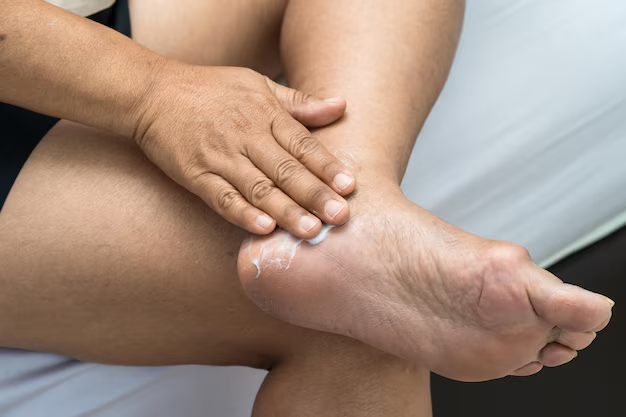Can You Develop Shingles on Your Leg? Here's What You Need to Know
If you've ever suffered from chickenpox, you might unexpectedly find yourself facing shingles later in life. But can shingles affect any part of the body, and specifically, can you get shingles on your leg? Let's dive into the world of shingles to uncover the symptoms, places it can manifest, and how you can manage or prevent future outbreaks.
Understanding Shingles: An Overview
Shingles, medically termed as herpes zoster, is a viral infection that results from the reactivation of the varicella-zoster virus—the same virus responsible for chickenpox. Once you've had chickenpox, the virus doesn't leave your body. Instead, it settles in nerve tissues near your brain and spinal cord, lying dormant for years.
Why Shingles Occurs
Not everyone who had chickenpox will develop shingles, but various factors might trigger its reactivation, including:
- Age: Shingles is more common in people over the age of 50.
- Weakened Immune System: Conditions or treatments that compromise your immune system can be a catalyst.
- Stress: Psychological stress or trauma could contribute to the virus waking up.
Recognizing the Symptoms
Shingles typically begins with pain, itching, or tingling in a specific area or on one side of the body or face, shortly followed by a red rash. Notably, the rash develops into fluid-filled blisters that eventually crust over. The pain can be intense, and some people describe it as burning or sharp. The rash can last two to four weeks.
Can Shingles Affect Your Legs?
The straightforward answer is yes, you can indeed get shingles on your leg. Here's how it happens: when the varicella-zoster virus reactivates, it travels along the path of a nerve. Depending on the specific nerve affected, shingles can appear on different parts of the body.
Shingles on the Leg: Specifics
- Pathways: Nerves extend from your spine to your extremities, including the legs. If the virus reactivates in these nerves, shingles can manifest as a rash on the leg.
- Symptoms on the Leg: Aside from the rash, you might experience tingling, itching, or severe pain, particularly on one side of the leg.
- Possible Misinterpretations: Shingles on the leg may initially be confused with other conditions like eczema, allergic reactions, or fungal infections because of the rash.
Importance of Timely Recognition
Identifying shingles early is crucial. Prompt medical attention can help prevent complications such as postherpetic neuralgia (PHN), a condition where pain continues after the rash has cleared up. Though this primarily affects older adults, early treatment can reduce severity and duration.
When to Consult a Healthcare Professional
Reach out to a healthcare provider if you observe symptoms such as:
- One-sided pain or tingling before a rash.
- Rash development with clear, fluid-filled blisters.
- Prolonged pain after the rash resolves.
Managing and Easing Symptoms
Though it’s crucial to consult with healthcare professionals, there are general approaches to managing shingles.
Pain Relief
- Over-the-counter pain relievers: Medications like acetaminophen or ibuprofen can alleviate pain.
- Cool Compresses: These can soothe burning or itchy skin.
- Calamine Lotion: Often used to relieve itching and soothe the rash.
Medical Treatments
Your doctor might prescribe antiviral medications which are most effective when started shortly after the rash appears. These can speed healing and reduce pain.
Self-care and Comfort
- Wear Comfortable Clothing: Loose-fitting fabrics like cotton can prevent irritation.
- Rest and Hydrate: Recovery can be physically taxing, so rest and fluid intake are vital.
- Avoid Scratching: Resist the urge to scratch the rash to prevent infection.
Preventive Measures and Reducing Risk
Prevention always reigns superior in health matters. While there’s no sure-shot way to prevent shingles entirely, measures can be taken to reduce the risk.
Vaccinations
- Shingles Vaccine: Recommended for adults aged 50 and above, vaccines like Shingrix can help prevent shingles and its complications significantly.
- Chickenpox Vaccine: While primarily for children, this vaccine can also be extended to adults who never had the disease or the chickenpox vaccine.
Healthy Lifestyle Choices
A robust immune system is your frontline defense. Practicing healthy lifestyle habits can fortify your immune system:
- Balanced Diet: Nutrition-rich foods support immune health.
- Regular Exercise: Physical activity can boost overall well-being.
- Stress Management: Techniques like meditation, yoga, or deep-breathing can mitigate stress.
Understanding the Broader Impacts of Shingles
Emotional and Psychological Implications
It's important to address the emotional toll shingles can take:
- Anxiety or Depression: Chronic pain or the impact of its appearance can affect one's mental health.
- Support Systems: Reach out to support groups or networks for assistance or sharing experiences.
Societal and Familial Considerations
- Infectiousness: Shingles itself isn't contagious, but the virus can spread and cause chickenpox in individuals who haven't had it or the vaccine.
- Communication: Educate family and friends about the condition to raise awareness and reduce stigma.
Navigating Work and Daily Life
Shingles might interfere with professional commitments or daily routines:
- Work Adjustments: If your job is physically demanding, discuss temporary adjustments with your employer.
- Personal Care: Ensure that you prioritize personal care despite external obligations.
In the journey of dealing with shingles, especially its manifestations on the leg, knowledge and prompt actions are your best allies. By recognizing symptoms early, seeking appropriate care, and adopting preventive strategies, you take steps toward minimizing impacts on your life and health.
Quick Reference Summary
- Yes, shingles can develop on your leg. 🌿
- Watch for symptoms: Pain, rash, tingling, or itching on one side of the leg. 🔍
- Timely medical intervention reduces complications. 🏥
- Manage pain: Over-the-counter medicines, cool compresses, proper rest. 💆♂️
- Preventive measures include vaccination and healthy lifestyle choices. 🥗
- Emotional and social impacts are equally important. 🤝
- Communicate with healthcare professionals for guidance. 🗣️
